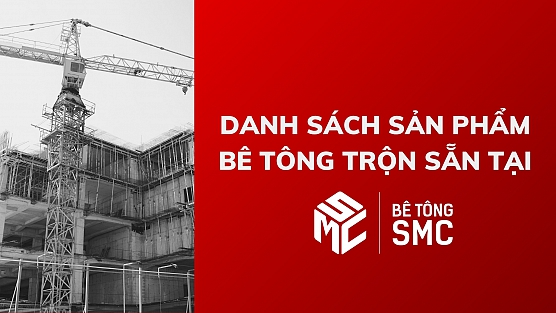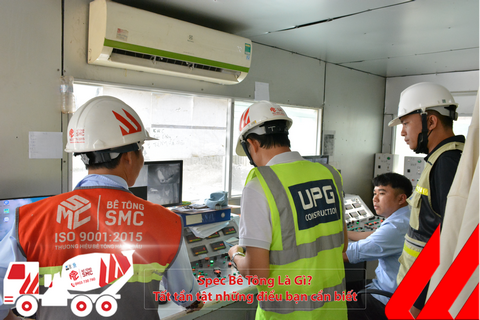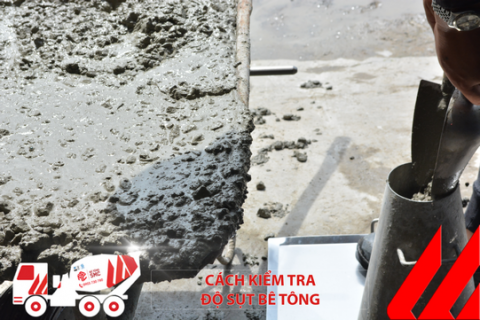Frequently asked Questions
Concrete engineering advice
Business contact
What is Low-Heat Concrete?
Low-heat concrete is a special type of concrete produced by using materials that limit the heat generation during the cement hydration process. This helps control the internal temperature of the concrete mass, reducing the risk of thermal cracking and ensuring the durability of the structure.
This development plays a crucial role in modern construction, especially for projects with large structures, thick concrete masses, and complex construction conditions. Using this type of concrete helps address the following issues:
1. Introduction to Low-Heat Concrete
Reducing Thermal Cracking: Thermal cracking is common in large concrete structures, leading to reduced strength and load-bearing capacity of the structure. Thus, it minimizes the risk of cracking.
Enhancing Durability: Low-heat concrete has better resistance to sulfates, acids, and abrasion compared to conventional concrete. Therefore, it can withstand harsh construction environments and ensure long-lasting durability for the project.
Cost Savings: It reduces the need for special construction measures like post-pour shrinkage control, thereby saving construction costs.
Reference: WHAT IS COMMERCIAL CONCRETE? MIXING METHODS AT SMC
 2. Technical Characteristics of Low-Heat Concrete
2. Technical Characteristics of Low-Heat Concrete
First, low-heat concrete is mainly applied in large projects, particularly those requiring high technical standards and adherence to domestic and international standards for fresh mass concrete.
In concrete design, the combination of low-heat cement and fly ash is considered to optimize the cement content used.
The concrete production process ensures the lowest possible temperature control for the input materials.
On-site, the temperature of fresh concrete and the internal temperature of the hardened concrete mass are maintained at appropriate levels.
To meet the TCVN 305:2004 standard, the temperature difference between points in the concrete is maximally controlled.

3. Factors Affecting Low-Heat Concrete
The effectiveness of low-heat concrete depends on several factors, including:
1. Production Process and Material Selection:
- Type of Cement: Using low-heat cement is the most crucial factor for effectively producing low-heat concrete.
- Type of Aggregate: Selecting aggregates with suitable size, shape, and water content helps minimize the amount of heat generated during hydration.
- Additives: Using heat-reducing additives, superplasticizers, and anti-cracking additives can enhance the effectiveness of low-heat concrete.
2. Construction Technology and Procedures:
- Concrete Mix Design: The concrete mix must be designed to suit the construction conditions and project requirements.
- Mixing and Transporting Methods: Using appropriate methods for mixing and transporting concrete helps minimize water loss and heat generation during construction.
- Construction and Curing Methods: Applying suitable construction and curing methods ensures quality and effectiveness.
3. Adherence to Technical Standards:
It is necessary to comply with technical standards related to the production, construction, and use of low-heat concrete to ensure the quality and effectiveness of this material.
Strict quality control and supervision during construction are also essential to ensure the project meets requirements for durability, safety, and energy efficiency.
In modern construction, finding environmentally friendly and energy-saving material solutions is becoming increasingly urgent. Low-heat concrete emerges as a potential choice, offering many superior benefits compared to conventional concrete.
Learn more: CAUSES OF REINFORCED CONCRETE CORROSION AND REMEDIES WITH SMC

To ensure high quality and meet standards, use ISO-standard commercial concrete from SMC Concrete. We are committed to providing quality concrete products that meet technical requirements and industry standards.
Thank you for choosing to read this article. Follow the SMC consulting channel for more useful information about concrete and its applications in construction. We are ready to support and advise you in building sustainable and high-quality projects.
Other news
Currently, ready-mix concrete is a top choice for many construction projects—both large and small—thanks to its convenience, consistent quality, and high construction efficiency. With extensive experience supplying commercial concrete for numerous key projects in the Southern region, SMC proudly offers a diverse range of ready-mix concrete products to meet the technical requirements of every type of construction.
A Comprehensive Guide to Concrete Specs – Everything You Need to Know
A Complete Guide to Concrete Specs – a set of technical parameters including concrete grade, slump, compressive strength, aggregate size, and mix ratio. This article helps you understand how to define, apply, and control concrete quality according to TCVN standards and practical construction conditions.
How to check the concrete slump
In construction and civil engineering, concrete slump test (or simple slump test) is the work performed at the construction site or in the laboratory that usually determines and measures the hardness, consistency of samples. Concrete before pouring concrete or casting maintenance, research or experiment samples.




